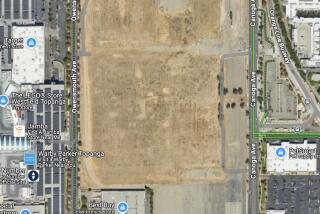A chemical spill, unchecked eyewash stations, poor training: Audit details Cal Stateâs lax lab safety
In May 2016, two bottles tumbled off a poorly supported shelf and broke, leading to a chemical spill in a Sacramento State University lab.
The liquid got onto one studentâs legs and soaked anotherâs feet.
For the record:
8:05 a.m. April 26, 2018An earlier version of this story said the audit was released Wednesday. It came out Tuesday.
Five employees cleaned up the mess, even though no one knew for sure what it was and whether it was dangerous. They called fellow employee Kim Harrington, their union representative, to let her know what happened.
The spill initially was thought to be all acetone â a solvent used in many nail polish removers that can irritate the nose, throat, eye and skin at moderate to high levels of exposure. The campus did not identify the liquid until the next day, when staff determined that the broken bottles contained not only acetone but another more harmful solvent called dimethylformamide, a known liver toxin that can cause abdominal pain, dizziness, skin problems and nausea.
âNo one knew exactly what it was so they cleaned it up the wrong way,â Harrington said. âTwo students were burned, and our staff was exposed to it. That started us down the road of trying to figure out ⌠how safe is this environment?â
Harringtonâs ensuing inquiry eventually led to a state audit, released Tuesday, that looked into Cal Stateâs safety measures in the handling of hazardous materials.
The Cal State Chancellorâs Office, the audit concluded, âhas not provided effective leadership to ensure that its campuses address health and safety concerns related to the presence of hazardous materials.â The office hasnât ensured that campuses consistently report on safety or that they convene required committees to discuss such concerns, auditors said.
The audit, requested by Assemblyman Jim Wood (D-Healdsburg), examined four campuses â Channel Islands, Sacramento, San Diego and Sonoma âbetween July 1, 2014, and June 30, 2017 â and surveyed lab techs systemwide.
The audit recommended developing a âuniform health and safety reporting templateâ by November and the creation of a systemwide safety committee. The Chancellorâs Office, the audit states, should require campuses to report on safety inspections each year.
Toni Molle, Cal Stateâs public affairs director, said the Chancellorâs Office agrees with the recommendations. âThe university takes seriously the health and safety of all of our employees and students and the Chancellorâs Office plans to conduct health and safety audits at all 23 of the campuses beginning in 2019,â she said in a statement. She said Cal State already has convened task forces and lab safety training work groups.
After the spill, Harrington started questioning her colleagues about safety in their labs. âDoor handles are rusting. Rubber bands are dissolving,â said Cathy Hutchinson, a biology technician at Channel Islands. âTheyâre exposed eight hours a day. Thatâs where their office is, where they eat lunch.â
Hutchinson said her co-worker was losing his taste buds â and would often find red bumps on his skin. Some workers, according to the audit, filed complaints saying that their work had damaged their health. Molle said the university had no records of workersâ compensation claims for such injuries.
Campuses havenât made sure that lab equipment designed to prevent injuries is fully functional, the audit found. State regulations require that eyewash stations and shower equipment be flushed monthly to make sure they are working properly. But only Channel Islands kept to this schedule. San Diego let nine months pass between flushing the eyewash stations. Sonoma let nearly two years pass between checking its showers. An audit in 2001 had found similar problems.
In a Sacramento printmaking lab, if a student needed to shower, he or she would have to leave the building, cross a campus common area and enter a lab in which people work with acids.
According to a systemwide survey, 18 of 193 employees â from 13 campuses â said they had needed safeguards that were not always available.
People in labs handle noxious chemicals by placing them in fume hoods, to try to ensure that noxious chemicals donât penetrate the air or anyoneâs lungs, but Sonoma hadnât inspected some of those hoods for three years, the audit found.
Three campuses didnât post required signs about asbestos at the entrances of mechanical rooms.
Of 193 lab techs in art, chemistry, biology, engineering and physics departments, 36% said their lab training was ineffective or missing important information. One said she had last had training 20 years ago.
More to Read
Sign up for Essential California
The most important California stories and recommendations in your inbox every morning.
You may occasionally receive promotional content from the Los Angeles Times.











